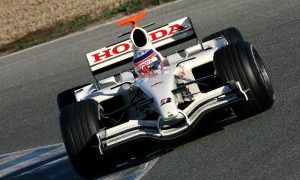Nicolas Carpentiers reviews the technical concepts and novelties spotted at the recent Japanese Grand Prix by providing you with images and explanations.

FERRARI IN THE EYE OF THE Y250 VORTEX
In order to identify its weaknesses and prepare for 2017’s planned regulation changes, Ferrari has continued to develop the front end of its 2016-spec SF16-H. After several evolutions had already been introduced in Malaysia, the car sported elongated front wing pillars in Japan. Besides their structural role, these also serve to direct the airflow – including the all-important Y250 vortex – towards the under-nose turning vanes, splitter, etc. Ferrari’s tweaking of the pillars did not come as a surprise after the raft of modifications seen at Sepang.
On both sides of the car, the Y250 vortex is generated by the pressure differential between the edge of the front wing’s neutral section (which is 250mm away from the car’s longitudinal axis on both sides) and the rest of its main board. In that area, the airflow moves towards the lower pressure zone as it curls upon itself. This creates a whirl that will decrease in energy intensity as it travels along the car.
Formula 1 aerodynamicists look for ways to control this vortex as much as possible, using a series of aero elements such as the front wing pillars, the turning vanes, the bat wing, the splitter fins, the sidepod vanes, etc. Engineers are keen to utilise the energy from the vortex (see yellow line) to keep the dirty wake coming off the rotating wheels (see white lines) away from the car’s floor.
In other words, the vortex acts as a barrier between the turbulent air and the edges of the floor. In doing so, it increases the efficiency of the diffuser at the rear. Depending on the setup, the diffuser can be raised (which amounts to running more rake on the car). Red Bull has been quite proficient in that field so it won't come as a surprise to see its Adrian Newey-designed chargers with quite a lot of rake and healthy Y250 vortices.






